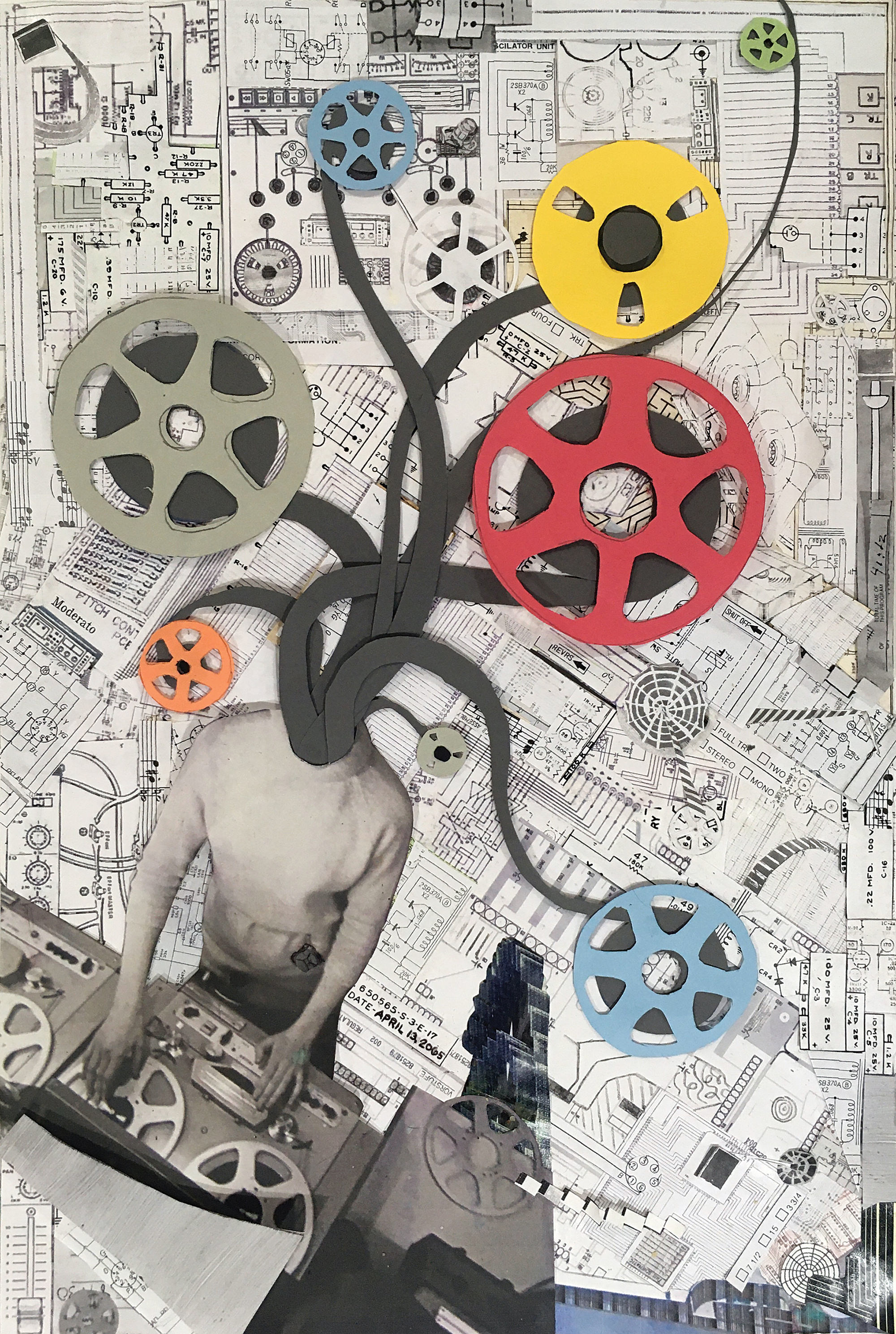A few months after releasing the MC-3 multi-band compressor plug-in [Tape Op #142] for APB (Analog Processing Box) users, Colin McDowell and the rest of the McDSP crew introduced the Royal Q Equalizer, and the Royal Mu Compressor and Limiter. These are powerhouse plug-ins utilizing the best of the APB’s analog processing, and are both perfectly suited for mixing or mastering work. Additionally, this October McDSP updated their APB driver to include native Apple M1 processor support – APB plug-ins were already M1 compatible. For those unfamiliar with the APB system, proprietary plug-ins are used to control up to 8- or 16-channels of true analog processing via McDSP’s APB-8 or APB-16 [Tape Op #134].
The Royal Mu Compressor and Limiter APB plug-in interface looks like a gorgeous piece of hardware begging to be adjusted. Forgoing McDSP’s trademark green livery, the “panel” of the plug-in is indeed a royal blue with large black, yellow, white, and grey knobs flanking a pair of vertical VU meters that can be switched between input, output, or gain reduction. As much as I’m generally not a fan of plug-ins mimicking real hardware on a 2D computer screen, there’s something likeable about using a highly skeuomorphic plug-in interface when you are actually controlling the proprietary APB analog hardware.
The Royal Mu can be inserted as a mono or stereo plug-in, and only takes one processing slot on the APB per channel, so the stereo instance is only using two slots (the Royal Q Equalizer operates similarly – more on this later). A stereo instance can be run as Dual with individual control over each channel, meaning stereo where the average of left and right are used for the gain control circuit, or mid/side with the left channel controlling the mid signal and the right controlling the sides. The expected compressor controls are present: Attack, Release, THR (threshold), and Ratio. Controls for the two sides of a stereo instance can be linked in two different ways via the Link button. Parameters can be offset on each side of the unit and still be automated together with Link 1 enabled. Link 2 allows for independent automation of each side should there be the need for divergent settings (such as when using mid/side mode).
The Royal Mu limiter is a single-knob affair (the largest one on the UI!) that adjusts input to the limiter post-compression. This control is pre-saturation, so you can start pushing into lovely analog dirt (if the SAT parameter is enabled) and then use the limiter trim (ranging from 0 dB to -30 dB) after all analog processing has been done before the signal is returned to the computer from the APB hardware unit.
The most unusual aspect of the Royal Mu is the EQ/Bias section. This is within the compressor circuit and is governed by two knobs, each with an associated bypass switch. The Bias knob is bipolar, with values of -100% to 0 causing more mid frequencies to bypass the compressor circuit, while values of 0 to +100% allow more low frequencies to pass. Think of it as a variable high-pass filter in the sidechain circuit of the compressor, but with even more flexibility. The EQ knob is similarly bipolar and is a fixed frequency to adjust boosting or cutting frequencies above the shelf into the compressor.
Moving to the Royal Q equalizer, it’s of the family with the same blue faceplate and similarly colored knobs. The center of the UI has a pair of trim controls to adjust post-EQ gain + or - 20 dB, a Link switch that works the same as the one in the Royal Mu, and a switch to enable mid/side mode instead of left/right. The rest of the plug-in is dedicated to the two channels of EQ, each containing four parametric bands with gain (±15 dB), frequency, and Q. Bands can be individually engaged or disengaged, but the really special part of the Royal Q is that the two lower and higher frequency controls can be switched to either peak or shelf. This allows for some really creative EQ curves should you choose to make one or both of the middle bands’ shelves that are then being acted upon by peaks above or below them. Imagine something like a Pultec EQP-1A low frequency control on steroids, but you can have it on the highs, too, if necessary!
The Royal Q can also saturate in the analog domain before being passed to the output Trim control; as with all APB plug-ins, the saturation will never cause the signal going back to the computer to digitally clip, so drive these babies into the red!
So, how do the pair of Royals sound? Here’s a list of superlatives: grand, rich, expansive, velvety, and fucking AWESOME! They really do sound excellent, and in all of my uses (mix bus, mastering, piano, drum bus), they have never failed to completely elevate the sources making the output sound that much better. Pushing the Royal Mu into saturation never really gets into the realm of “distortion”, but it adds glorious harmonics that impart life and interest to more sedately recorded sounds. The Royal Q loves to be pushed hard, and the unique dual shelf nature has led me down some sculpting paths I likely wouldn’t have found using my regular tools.
The APB ecosystem keeps growing and getting better with each new update. If you still haven’t checked out this analog processing system controlled by plug-ins, I highly recommended a demo at one of the many McDSP dealers throughout the world.




_disp_horizontal_bw.jpg)